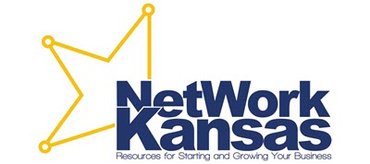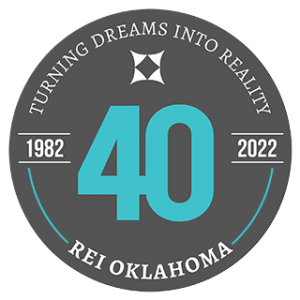In Nebraska, Colorado and Oklahoma, small communities are doing something that few expect them to do: thrive. With planning, intention and an appreciation for home-grown entrepreneurs, they are making what once seemed impossible, possible. Stories from these rural communities and small towns in the Tenth District are featured in External LinkInvesting in Rural Prosperity, a new guidebook to help rural communities achieve shared economic prosperity. We’ll share quick summaries from three chapters that will leave you wanting to learn more. (Hint: That’s what the links are for.)
The catalyst for Investing in Rural Prosperity was the desire to help rural areas, many of which already were in precarious economic shape, recover from the body blow of the pandemic. The book has 42 chapters involving 79 authors and covering a range of topics. It showcases stories of progress and highlights recommendations for action. Investing in Rural Prosperity is a joint effort of the Federal Reserve Board and the Federal Reserve Bank of St. Louis.
Entrepreneurial Ecosystem-Building in Rural America: Ord, Nebraska
Chapter by Steve Radley, president and CEO, External LinkNetWork Kansas, and Don Macke, vice president, External Linke2 Entrepreneurial Ecosystems
Success stories can be more deflating than inspiring. You look closely and realize that there was some secret sauce that you can’t duplicate. Or they had a resource, human or built or natural, that you don’t have. Or the stars and planets simply aligned to assure their success. That is not the case with Ord, Nebraska.

Ord, a town of 2,300 residents on the eastern edge of the Nebraska Sandhills, suffered the loss of jobs and population, like many other small towns. Today, Ord is thriving, but its secret is no secret at all. Ord committed to building an entrepreneurial ecosystem – basically a business environment – that contributes to its residents’ prosperity. Its lessons can be applied in many small towns.
After two decades of decline, in 2000 Ord began to envision a new future. Then the town made commitments and investments that, over time, transformed Ord from a struggling agricultural economy to a diverse, competitive economy led by entrepreneurs. Among the actions Ord took:
- Establishing a proactive community foundation;
- Passing a local state-approved sales tax levy used for a revolving loan fund and gap financing for entrepreneurs;
- Starting a leadership training program that was community-based and long-term;
- Accepting and using guidance from outside resource agencies.

Between 2000-18, Valley County, which includes Ord, increased its proprietorship-related jobs more than 18% over Nebraska peers, and more than double its peers in Kansas. Chapter 21, External LinkEntrepreneurial Ecosystem-Building in Rural America, explains the role of entrepreneurship in Ord’s transformation, describes the Ord entrepreneurial ecosystem, and offers 10 lessons and insights for other rural communities.
Small-Town Tech Towns: Where Scalable Entrepreneurship Is Propelling Rural Growth: Durango, Colorado
Chapter by Matt Dunne, founder and executive director, External LinkCenter on Rural Innovation
First, the good news. Since COVID-19, surveys show many Americans want to live in rural places, especially when they can do tech-enabled work. But there is bad news, too. The digital economy is growing at a rate 4.3 times faster than the economy as a whole, but not in rural areas. Of computer and math jobs created between 2010-19, 97% were created in metro areas.
And … back to good news. This chapter asserts that rural communities do have the power to take ownership over today’s means of production – automation and technology – to drive digital entrepreneurship and innovation. It shares the results of work by the Center on Rural Innovation, which launched the Rural Innovation Network in 2019.

Chapter 22, External LinkSmall-Town Tech Towns: Where Scalable Entrepreneurship Is Propelling Rural Growth, shares three components needed for a rural area to participate in the digital economy, and five direct drivers of digital economy ecosystems that allow a town to compete in the digital economy. Case studies include Cape Girardeau, Missouri, and Traverse City, Michigan, along with the Southwest Colorado Accelerator Program for Entrepreneurs (SCAPE) in Durango, Colorado, in the Kansas City Fed’s Tenth District.
Durango leaders wanted to reduce reliance on oil and gas to create high-wage jobs in other industries. They set out to grow local, scalable tech startups. When they realized many entrepreneurs were not ready for growth, they launched SCAPE. Along with an intensive six-month accelerator program serving Durango and five surrounding counties, SCAPE runs a private investment fund that invests in SCAPE startups. SCAPE is explicitly place-based; one criterion for investment is that the business wants to remain headquartered locally.
The combined mission of incubating growth startups and helping the local economy have been a win for the Durango area. SCAPE has, in seven years, helped rural companies raise more than $24 million to create more than 150 jobs at above-average wages.
Expanding Oklahoma’s Prosperity One Dream at a Time
Chapter by Scott Dewald, president and CEO, External LinkRural Enterprises of Oklahoma
The early 1980s were a difficult time to be a rural Oklahoman. Small retail and agriculture-related businesses and industries abandoned rural communities in favor of urban centers. Rural entrepreneurs had a hard time building momentum. Rural Enterprises of Oklahoma Inc. (REI Oklahoma) grew out of that disappointment and discouragement. Its mission is to expand economic opportunities for Oklahomans by providing flexible financing and development services to those with limited access to resources.
Wes Watkins, the catalyst for establishing REI Oklahoma, took a statewide view of the need to improve rural economies. Watkins served two years as state senator and 14 years in Congress, representing Oklahoma’s 3rd Congressional District. Today, as it celebrates its 40th year, REI Oklahoma offers lessons to other states with similar goals.

Chapter 25, External LinkExpanding Oklahoma’s Prosperity One Dream at a Time, explains the various programs the nonprofit offers, from business loans and tax credits, to its Women’s Business Center and Minority Business Center, to commercial space that offers a safe, functional environment for entrepreneurs. In addition to more typical business services, REI Oklahoma also tackles homeownership to help businesses recruit and retain employees. Its REI Down Payment Assistance gives low- and moderate-income Oklahomans help with down payment and/or closing costs.
The chapter also shares five goals that offer a sort of road map for the organization. Partnerships factor heavily into its work, essential for a statewide nonprofit serving 77 counties with a small staff. It maintains an extensive collaboration with statewide community development partners, and pitches in to help them create jobs and help their communities thrive.
